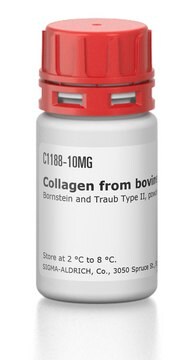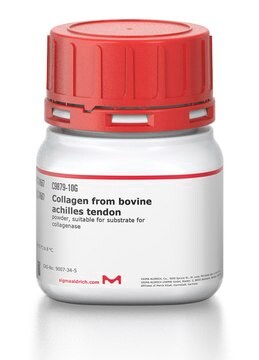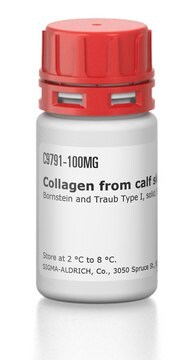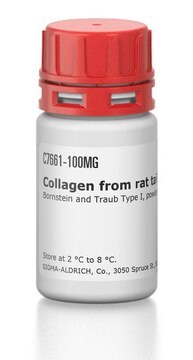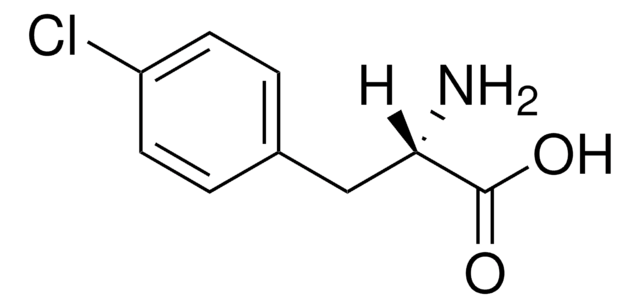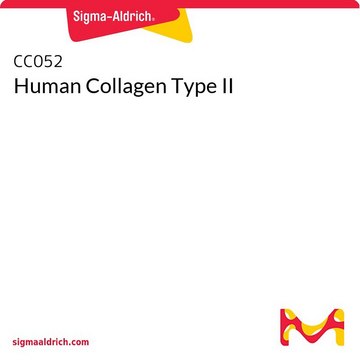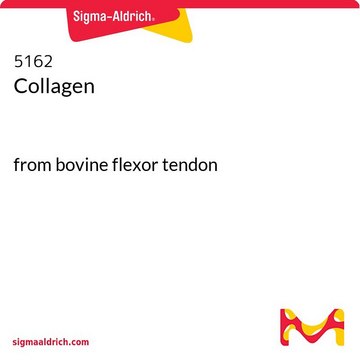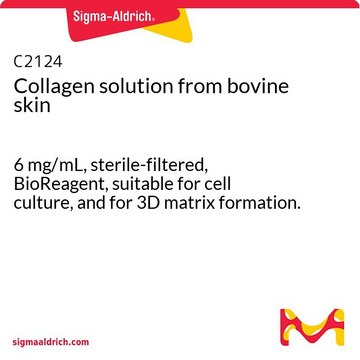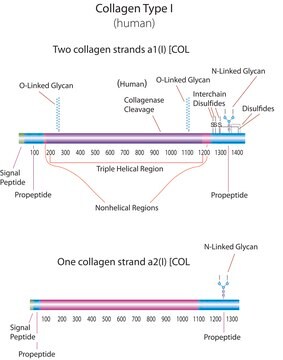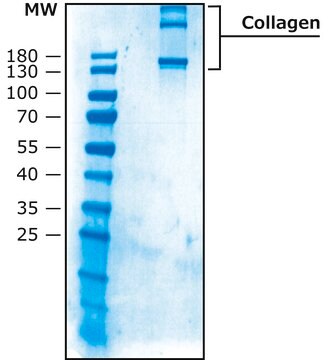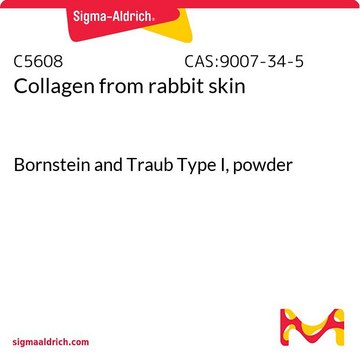C9301
Chicken Collagen Type II
from chicken sternal cartilage, powder, suitable for cell culture
About This Item
Productos recomendados
product name
Collagen from chicken sternal cartilage, Type II (Miller), powder, BioReagent, suitable for cell culture
origen biológico
chicken (Sternal cartilage)
Nivel de calidad
tpo
Type II (Miller)
Línea del producto
BioReagent
formulario
powder
envase
glass bottle of 100 mg
poly bottle of 25 mg
glass bottle of 5 mg
concentración
60-80% (biuret)
técnicas
cell culture | mammalian: suitable
cobertura de la superficie
6‑10 μg/cm2
solubilidad
acetic acid: 0.5-2.0 mg/mL (Dissolve for several hours at 2-8 °C, occasionally swirling.)
Nº de acceso UniProt
Especificidad de unión
Peptide Source: Fibrinogen
Condiciones de envío
wet ice
temp. de almacenamiento
2-8°C
Información sobre el gen
chicken ... COL2A1(395069)
Descripción general
Aplicación
- in enzyme–linked immunosorbent assay (ELISA).
- chondrocyte-mediated tissue production in vitro.
- induction, treatment, and assessment of collagenα induced arthritis (CIA).
- cell proliferation assay.
- as a coating for cell culture surfaces.
Acciones bioquímicas o fisiológicas
Características y beneficios
Otras notas
Nota de preparación
Código de clase de almacenamiento
11 - Combustible Solids
Clase de riesgo para el agua (WGK)
WGK 1
Punto de inflamabilidad (°F)
Not applicable
Punto de inflamabilidad (°C)
Not applicable
Equipo de protección personal
Eyeshields, Gloves, type N95 (US)
Certificados de análisis (COA)
Busque Certificados de análisis (COA) introduciendo el número de lote del producto. Los números de lote se encuentran en la etiqueta del producto después de las palabras «Lot» o «Batch»
¿Ya tiene este producto?
Encuentre la documentación para los productos que ha comprado recientemente en la Biblioteca de documentos.
Los clientes también vieron
Artículos
Cancer stem cell media, spheroid plates and cancer stem cell markers to culture and characterize CSC populations.
Extracellular matrix proteins such as laminin, collagen, and fibronectin can be used as cell attachment substrates in cell culture.
Nuestro equipo de científicos tiene experiencia en todas las áreas de investigación: Ciencias de la vida, Ciencia de los materiales, Síntesis química, Cromatografía, Analítica y muchas otras.
Póngase en contacto con el Servicio técnico